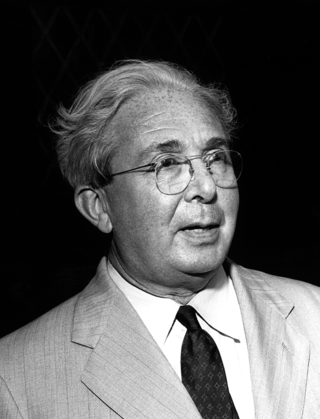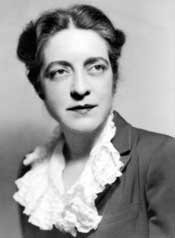
Spencer R. Weart (born 1942) is the former director of the Center for History of Physics of the American Institute of Physics (AIP) from 1971 until his retirement in 2009.

Spencer R. Weart (born 1942) is the former director of the Center for History of Physics of the American Institute of Physics (AIP) from 1971 until his retirement in 2009.
Originally trained as a physicist, he is now a historian of science. [1] He earned his B.A. in Physics at Cornell University in 1963 and a Ph.D. in Physics and Astrophysics at the University of Colorado, Boulder, in 1968. He then did postdoctoral studies at the Hale Observatories and California Institute of Technology, publishing papers on solar physics; from 1971 to 1974 he studied history of science in the University of California, Berkeley. While directing the AIP Center for History of Physics he taught courses at Johns Hopkins University and Princeton University.
He conducted oral history interviews of many physical scientists, particularly astrophysicists such as Subrahmanyan Chandrasekhar (1977) [2] and climate scientists such as Wallace Broecker (1997). [3]
He has produced numerous historical articles and two children's science books and written or co-edited eleven other books, [4] including the following:
While at AIP he also produced and edited an award-winning website with historical exhibits.

Aage Niels Bohr was a Danish nuclear physicist who shared the Nobel Prize in Physics in 1975 with Ben Roy Mottelson and James Rainwater "for the discovery of the connection between collective motion and particle motion in atomic nuclei and the development of the theory of the structure of the atomic nucleus based on this connection". Starting from Rainwater's concept of an irregular-shaped liquid drop model of the nucleus, Bohr and Mottelson developed a detailed theory that was in close agreement with experiments.

Niels Henrik David Bohr was a Danish physicist who made foundational contributions to understanding atomic structure and quantum theory, for which he received the Nobel Prize in Physics in 1922. Bohr was also a philosopher and a promoter of scientific research.

Leo Szilard was a Hungarian-German-American physicist and inventor. He conceived the nuclear chain reaction in 1933, patented the idea of a nuclear fission reactor in 1934, and in late 1939 wrote the letter for Albert Einstein's signature that resulted in the Manhattan Project that built the atomic bomb.
Solid-state physics is the study of rigid matter, or solids, through methods such as quantum mechanics, crystallography, electromagnetism, and metallurgy. It is the largest branch of condensed matter physics. Solid-state physics studies how the large-scale properties of solid materials result from their atomic-scale properties. Thus, solid-state physics forms a theoretical basis of materials science. It also has direct applications, for example in the technology of transistors and semiconductors.

Hans Albrecht Bethe was a German-American theoretical physicist who made major contributions to nuclear physics, astrophysics, quantum electrodynamics, and solid-state physics, and who won the 1967 Nobel Prize in Physics for his work on the theory of stellar nucleosynthesis. For most of his career, Bethe was a professor at Cornell University.

Emilio Gino Segrè was an Italian-American physicist and Nobel laureate, who discovered the elements technetium and astatine, and the antiproton, a subatomic antiparticle, for which he was awarded the Nobel Prize in Physics in 1959 along with Owen Chamberlain.

William Alfred Fowler (9 August 1911 – 14 March 1995) was an American nuclear physicist, later astrophysicist, who, with Subrahmanyan Chandrasekhar, won the 1983 Nobel Prize in Physics. He is known for his theoretical and experimental research into nuclear reactions within stars and the energy elements produced in the process and was one of the authors of the influential B2FH paper.

VictorFrederick "Viki" Weisskopf was an Austrian-born American theoretical physicist. He did postdoctoral work with Werner Heisenberg, Erwin Schrödinger, Wolfgang Pauli, and Niels Bohr. During World War II he was Group Leader of the Theoretical Division of the Manhattan Project at Los Alamos, and he later campaigned against the proliferation of nuclear weapons.

Melba Newell Phillips was an American physicist and pioneer science educator. One of the first doctoral students of J. Robert Oppenheimer at the University of California, Berkeley, Phillips completed her Ph.D. in 1933, a time when few women pursued careers in science. In 1935 Oppenheimer and Phillips published their description of the Oppenheimer–Phillips process, an early contribution to nuclear physics that explained the behavior of accelerated nuclei of radioactive hydrogen atoms. Phillips was also known for refusing to cooperate with a U.S. Senate judiciary subcommittee's investigation on internal security during the McCarthy era that led to her dismissal from her professorship at Brooklyn College, where she was a professor of science from 1938 until 1952.

Wallace "Wally" Smith Broecker was an American geochemist. He was the Newberry Professor in the Department of Earth and Environmental Sciences at Columbia University, a scientist at Columbia's Lamont–Doherty Earth Observatory and a sustainability fellow at Arizona State University. He developed the idea of a global "conveyor belt" linking the circulation of the global ocean and made major contributions to the science of the carbon cycle and the use of chemical tracers and isotope dating in oceanography. Broecker popularized the term "global warming". He received the Crafoord Prize and the Vetlesen Prize.

Gregory Breit was a Russian-born Jewish American physicist and professor at New York University (1929–1934), University of Wisconsin–Madison (1934–1947), Yale University (1947–1968), and University at Buffalo (1968–1973). In 1921, he was Paul Ehrenfest's assistant in Leiden University.
John Lewis Heilbron is an American historian of science best known for his work in the history of physics and the history of astronomy. He is Professor of History and Vice-Chancellor Emeritus at the University of California, Berkeley, senior research fellow at Worcester College, Oxford, and visiting professor at Yale University and the California Institute of Technology. He edited the academic journal Historical Studies in the Physical and Biological Sciences for twenty-five years.
Kurt Gottfried was an Austrian-born American physicist who was professor emeritus of physics at Cornell University. He was known for his work in the areas of quantum mechanics and particle physics and was also a co-founder with Henry Way Kendall of the Union of Concerned Scientists. He wrote extensively in the areas of physics and arms control.
Konrad Bleuler was a Swiss physicist who worked in the field of theoretical particle physics and quantum field theory. He is known for his work on the quantisation of the photon, the Gupta–Bleuler formalism.

Jules Guéron was a French physical chemist and atomic scientist who played a key role in the development of atomic energy in France.
Joan Carol Warnow-Blewett was an American archivist and staff member of the American Institute of Physics (AIP) for 32 years.
Lillian Hartman Hoddeson is an American historian of science, specializing in the history of physics and technology during the 2nd half of the 20th century.
John Markus Blatt was an Austrian-born American theoretical physicist.
Max Dresden was a Dutch-American theoretical physicist and historian of physics. He is known for his research in "statistical mechanics, superconductivity, quantum field theory, and elementary particle physics."
Michael Riordan is an American physicist, science historian and author.